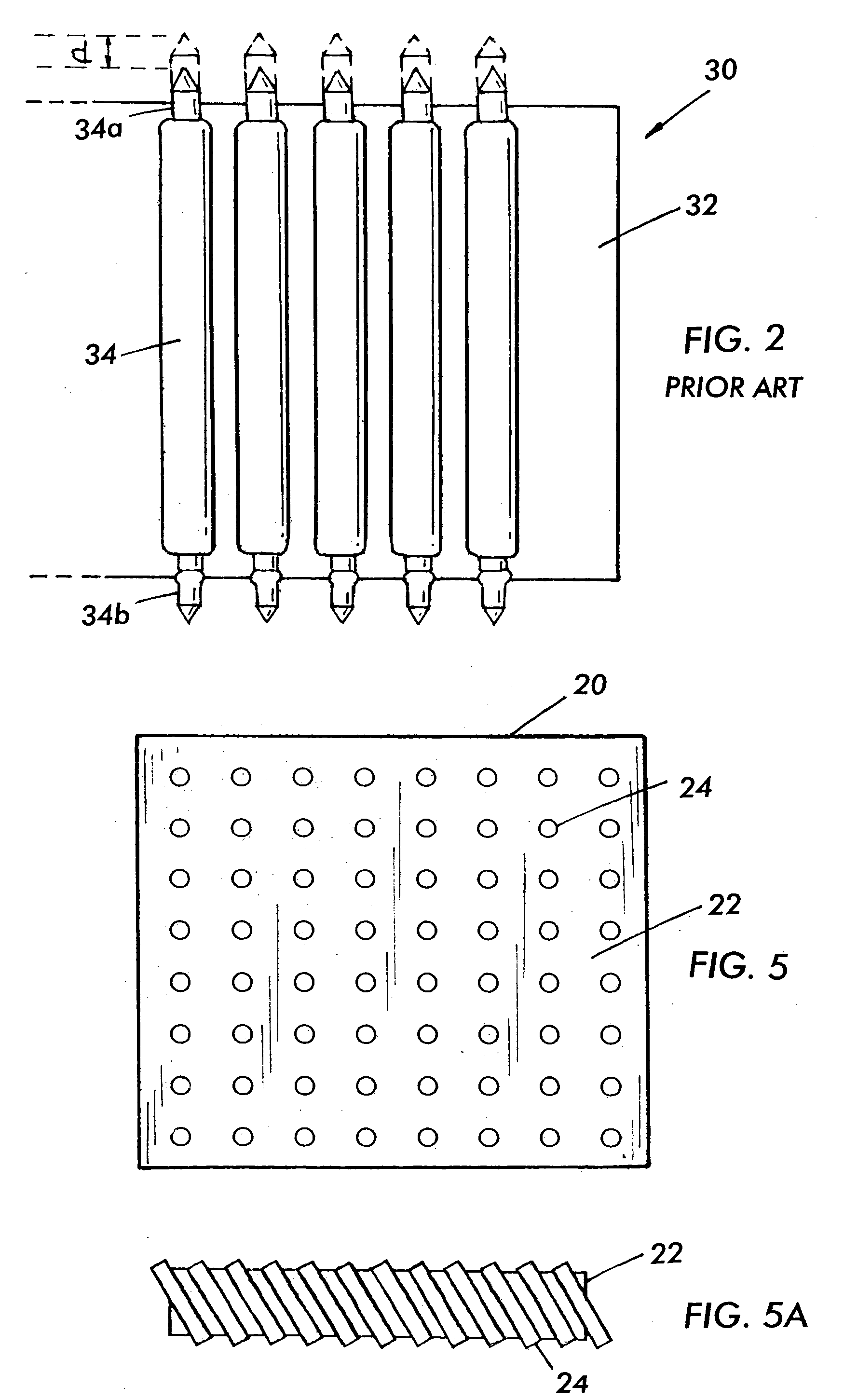Test arrangement including anisotropic conductive film for testing power module
a technology of anisotropic conductive film and power module, which is applied in the direction of electrical testing, measurement devices, instruments, etc., can solve the problems of power supply voltage transient, inaccurate power loss measurement, and no value to the user, so as to improve the voltage stability of the module, reduce the impedance connection, and reduce the stray inductance
- Summary
- Abstract
- Description
- Claims
- Application Information
AI Technical Summary
Benefits of technology
Problems solved by technology
Method used
Image
Examples
Embodiment Construction
[0026] As seen in FIG. 4, the module under test (not shown) is held in a holding block 55 which is lowered onto the test board by a vertical shaft 57. Disposed in the test socket is an anisotropic conductive elastomeric sheet 20, shown in plan view in FIG. 5, i.e., an elastomeric sheet that conducts substantially in only one direction.
[0027] One example of such a sheet is shown in FIG. 5A. In this example, the sheet 20 comprises an elastomeric matrix 22, and a large number of conductors 24 extending substantially in parallel through the matrix 22. As seen, because of the flexibility of the matrix, the matrix can compress to an extent when the module is pressed down by the holding block, which may cause the conductors to tilt while still remaining parallel, providing more reliable communication between the test board and the module under test, than with the prior pogo-pin arrays.
[0028] The sheet may take other structures besides that shown in FIG. 5A, as long as it provides conduct...
PUM
 Login to View More
Login to View More Abstract
Description
Claims
Application Information
 Login to View More
Login to View More - R&D
- Intellectual Property
- Life Sciences
- Materials
- Tech Scout
- Unparalleled Data Quality
- Higher Quality Content
- 60% Fewer Hallucinations
Browse by: Latest US Patents, China's latest patents, Technical Efficacy Thesaurus, Application Domain, Technology Topic, Popular Technical Reports.
© 2025 PatSnap. All rights reserved.Legal|Privacy policy|Modern Slavery Act Transparency Statement|Sitemap|About US| Contact US: help@patsnap.com



